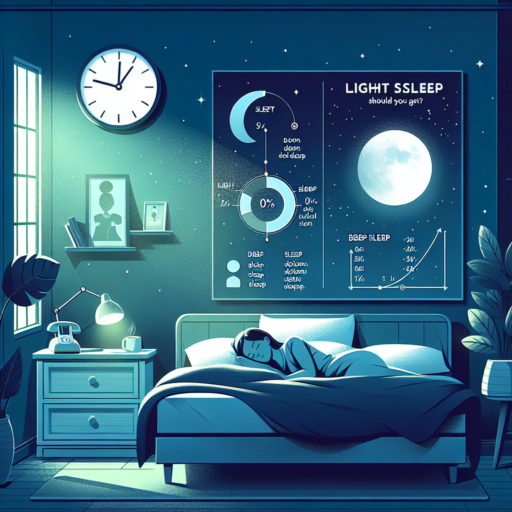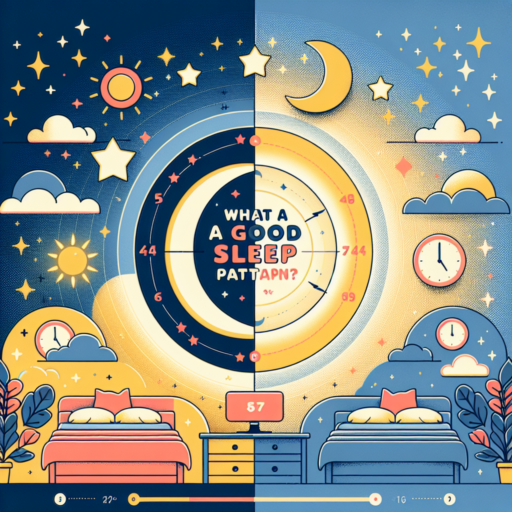How many hours of light sleep should you get?
Understanding the right amount of light sleep is crucial for maintaining overall health and well-being. While deep sleep is often highlighted for its restorative effects, light sleep serves as a transitional phase and occupies a significant portion of our sleep cycle. Generally, adults experience a larger portion of their sleep in the light sleep stage, which plays a pivotal role in cognitive functions and memory consolidation.
In the realm of sleep science, it’s suggested that there isn’t an exact number of hours of light sleep one «should» get per night, as it significantly varies among individuals. However, on average, adults typically spend 50-60% of their sleep time in the light sleep phase. This equates to approximately 4-6 hours for a healthy adult aiming for the recommended 7-9 hours of total sleep per night. This stage of sleep acts as a buffer and transition between wakefulness, deep sleep, and REM sleep, playing a crucial role in how rested you feel the next day.
Factors such as age, lifestyle, overall health, and stress levels can influence the quantity and quality of light sleep. It’s essential to monitor your sleep patterns and make adjustments if necessary. Tools like sleep trackers can offer insights into your sleep stages, including how much light sleep you’re getting. Paying attention to these metrics can help you understand your body’s needs and adjust your sleep habits for better health and performance.
Is more light sleep better than deep sleep?
The question of whether more light sleep is better than deep sleep touches on the intricate mechanics of our sleep cycles. Each stage of sleep serves a unique purpose in our rest and recovery process, including both light and deep sleep phases. While deep sleep is crucial for physical restoration and memory consolidation, light sleep occupies a larger portion of our sleep cycle, acting as a bridge to more profound stages of rest and playing a vital role in cognitive processing and sleep regulation.
Understanding the balance between light and deep sleep is pivotal for optimizing health and well-being. Deep sleep, characterized by slow brain waves, is often considered the most restorative phase, critical for immune function, tissue repair, and energy replenishment. However, dismissing the significance of light sleep could overlook its importance in memory encoding, mood regulation, and readiness for awake periods. Light sleep stages also facilitate the transition to deep sleep, highlighting the necessity of a harmonious sleep cycle.
Research suggests that the ideal sleep architecture involves a delicate balance between light and deep sleep stages. The proportion and quality of these stages can vary significantly among individuals, influenced by factors such as age, lifestyle, and overall health. Therefore, rather than framing the debate as more light sleep versus more deep sleep, it may be more beneficial to consider how both contribute to holistic sleep health and the achievement of optimal physiological and psychological states during waking hours.
How much light is good for sleep?
Figuring out how much light is good for sleep is essential for improving sleep quality and overall health. Research indicates that the amount and type of light exposure before bedtime significantly affects our sleep cycle. Ideally, exposure to bright light should be limited at least an hour before going to bed. This helps in the production of melatonin, a hormone that signals your body it’s time to sleep.
It is recommended to use dim, warmer lights in the evening. Red or orange hues are particularly beneficial as they have the least impact on melatonin production. A practical tip is to replace bright, blue-light emitting bulbs in your bedroom with those that emit red spectrum light. This adjustment can significantly improve your sleep quality by aligning with your body’s natural circadian rhythm.
Moreover, the introduction of smart lighting technology has made it easier to control light exposure in our environments. These systems can be set to mimic natural light patterns, gradually dimming as it gets closer to your bedtime. The seamless adjustment to a darker environment helps prepare your body for sleep, ensuring a restful night.
No se han encontrado productos.
How much of each sleep stage should you get?
Understanding the various sleep stages and the recommended duration for each can significantly enhance your sleep quality and overall health. The sleep cycle is grouped into two main types: REM (Rapid Eye Movement) and NREM (Non-Rapid Eye Movement), which further divides into three distinct stages. Achieving an optimal balance of each stage throughout the night is essential for restorative sleep.
The first stage of NREM sleep, known as N1, is the lightest phase, typically lasting for 1-5 minutes, serving as a transition period into deeper sleep. Progressing into the night, N2, the second stage, lasts approximately 10-25 minutes per cycle, occupying about 45-55% of total sleep in adults. It’s vital for memory consolidation and physical rejuvenation. The third stage, N3, often referred to as deep sleep, is crucial for physical recovery, immune function, and emotional well-being, constituting 15-25% of an adult’s sleep.
Following NREM, REM sleep kicks in, generally about 90 minutes after falling asleep. This stage, where dreaming occurs, lasts about 10-60 minutes and lengthens with each cycle. Comprising about 20-25% of an adult’s nightly sleep, REM plays a significant role in memory formation, emotional processing, and brain detoxification. Aiming for a balanced cycle that includes 4-5 repetitions of the NREM to REM transition is key to maximizing the restorative effects of sleep.




